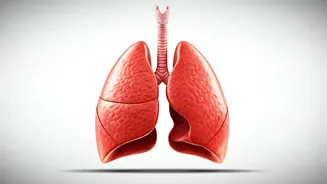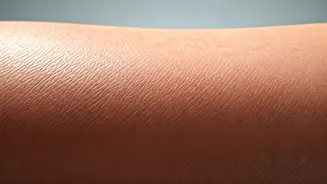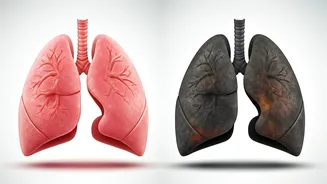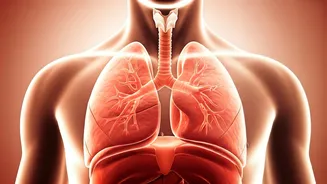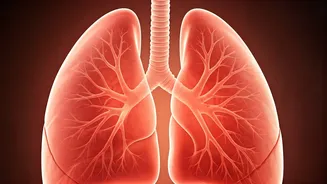Understanding Asthma Basics
Asthma is a chronic respiratory condition that affects millions. It causes inflammation and narrowing of the airways, leading to difficulty in breathing,
coughing, wheezing, and chest tightness. Asthma triggers vary from person to person and can include allergens like pollen and dust mites, irritants such as smoke and pollution, infections, exercise, and even stress. Identifying and avoiding these triggers is essential for managing the condition. Recognizing the different types of asthma, such as allergic asthma, exercise-induced asthma, and occupational asthma, helps tailor treatment plans. While asthma cannot be cured, it can be effectively managed with medication and lifestyle adjustments. Understanding the fundamental aspects of the condition is crucial for anyone looking to control it, ensuring they can make informed decisions about their health.
Diaphragmatic Breathing Explained
Diaphragmatic breathing, also known as belly breathing, is a powerful technique to improve lung function. It involves using the diaphragm, a large muscle at the base of the lungs, to draw air deeply into the abdomen. To practice, lie on your back with your knees bent or sit comfortably. Place one hand on your chest and the other on your abdomen. As you inhale slowly through your nose, focus on pushing your abdomen up, while keeping your chest relatively still. Exhale slowly through your mouth, allowing your abdomen to fall while pushing the air out. This technique strengthens the diaphragm, increases oxygen intake, and reduces the work of breathing. Regular practice can lower heart rate, reduce stress, and improve overall respiratory efficiency. Incorporating this method into your daily routine offers significant benefits, especially for those with asthma.
Pursed-Lip Breathing Technique
Pursed-lip breathing is another simple yet effective technique for managing asthma symptoms. It helps to slow down the breathing rate and keep the airways open longer, allowing for better air exchange. To practice this, begin by relaxing your neck and shoulders. Inhale slowly and deeply through your nose. Then, purse your lips as if you're about to whistle. Exhale slowly and gently through your pursed lips, taking twice as long to exhale as you did to inhale. This controlled exhalation helps to release trapped air in the lungs and reduces shortness of breath. Doing this can also reduce anxiety. Practice pursed-lip breathing whenever you feel short of breath, during activities that cause breathlessness, or as a general relaxation technique. It's a convenient and easy-to-learn method to enhance respiratory control.
The Buteyko Method Overview
The Buteyko method is a breathing technique developed to reduce over-breathing. This method emphasizes the importance of breathing through the nose and reducing the volume of air inhaled. It involves a series of exercises designed to normalize breathing patterns and reduce symptoms. One key aspect involves breath-holding exercises to increase carbon dioxide levels, which can help dilate airways and improve oxygen absorption. Practicing Buteyko requires specific training and guidance from a certified practitioner. The technique's proponents suggest it can lessen the frequency and severity of asthma attacks. Though it requires dedicated practice, it offers a distinct approach to managing asthma. Before starting any new breathing technique, consultation with a healthcare professional is crucial to ensure it is suitable for your condition and overall health needs.
Yoga Breathing Practices
Yoga offers several breathing exercises, or pranayama, beneficial for asthma management. These techniques focus on controlling the breath to improve lung capacity, reduce stress, and enhance overall respiratory health. Techniques like Ujjayi breathing (ocean breath) and alternate nostril breathing (Nadi Shodhana) are particularly helpful. Ujjayi involves constricting the back of the throat during inhalation and exhalation, producing a soft ocean-like sound. This slows the breath and allows for deeper, more controlled breathing. Nadi Shodhana involves alternately breathing through each nostril. It helps balance the nervous system and can reduce anxiety, which often exacerbates asthma symptoms. Regular yoga practice, under the guidance of a qualified instructor, can promote improved lung function and breathing control. It complements medical treatments and offers a holistic approach to asthma care.
Integrating into Daily Life
Incorporating these breathing exercises into your daily routine is key to maximizing their benefits. Start by practicing for a few minutes each day and gradually increase the duration as you become more comfortable. Schedule practice sessions at the same time each day to establish a routine, such as in the morning or before bedtime. Practice the exercises in a quiet, comfortable environment to minimize distractions. You can practice them while sitting, standing, or lying down, depending on your comfort level. Combining breathing exercises with other asthma management strategies, such as medication, trigger avoidance, and regular exercise, can enhance overall well-being. Be patient and consistent; with regular practice, you will notice improvements in your breathing and overall asthma control.
